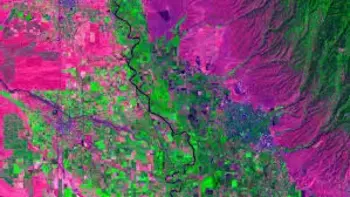QGIS for Land Degradation Assessment & SDG monitoring in GIS
Conduct Remote Sensing & GIS for Land Degradation Assessment & Sustainable Development Goals (SDGs) Indicators

What you'll learn
Students will learn to work in TrendsEarth in QGIS
To learn how to conduct land degradation analysis in QGIS
Get informed about Sustainable Development Agenda and Sustainable Development Indicators (SDGs)
Learn basics of Remote Sensing and how to apply Remote Sensing analysis in open-source tools
Complete your independent land degradation project using geospatial approaches in QGIS
Requirements
A working computer with internet connection
An interest in working with spatial data and GIS
Description
This course is designed to take users who use GIS for basic geospatial data/GIS/Remote Sensing analysis to perform land degradation assessment and monitoring Sustainable Development Goals (SDGs) Indicator 15.3 'Proportion of Degraded Land' with Big Data on the cloud using QGIS! The course will also focus on introducing you to sustainable development goals (SDG) indicators computation using the TrendsEarth plugin in QGIS. I will also introduce you to user-intuitive cloud computing using EO-browser!
This course provides you with all the necessary knowledge to start and advance your skills with Geospatial analysis and includes several hours of video content, plenty of practical analysis, and downloadable materials. After taking this course, you will be able to implement PRACTICAL, real-life spatial geospatial analysis for Land Degradation applications, and tasks with the Big Data in QGIS.
This course is designed to equip you with the theoretical and practical knowledge of applied geospatial analysis, namely Remote Sensing and some Geographic Information Systems (GIS). This course emphasizes the importance of understanding:
- Foundation of Remote Sensing in open-source tools (QGIS,)
- Working with the open-source GIS software & tools (QGIS, Google Earth Engine, Trends. Earth Plugin)
- Learning how to conduct GIS / Remote Sensing analysis for SDGs Indicator monitoring and environmental applications (such as land degradation monitoring)
By the end of the course, you will feel confident and completely understand the basics of Remote Sensing for spatial analysis in QGIS. You will learn to implement the practical environmental application with Big Data and in QGIS with Trends. Earth plugin. This course will also prepare you for using geospatial analysis with open source and free software tools.
Who this course is for
Geographers, Programmers, geologists, biologists, social scientists, or every other expert who deals with GIS maps in their field
MP4 | Video: h264, 1280x720 | Audio: AAC, 44.1 KHz, 2 Ch
Genre: eLearning | Language: English + srt | Duration: 24 lectures (2h 21m) | Size: 952 MB
Download
*
Conduct Remote Sensing & GIS for Land Degradation Assessment & Sustainable Development Goals (SDGs) Indicators

What you'll learn
Students will learn to work in TrendsEarth in QGIS
To learn how to conduct land degradation analysis in QGIS
Get informed about Sustainable Development Agenda and Sustainable Development Indicators (SDGs)
Learn basics of Remote Sensing and how to apply Remote Sensing analysis in open-source tools
Complete your independent land degradation project using geospatial approaches in QGIS
Requirements
A working computer with internet connection
An interest in working with spatial data and GIS
Description
This course is designed to take users who use GIS for basic geospatial data/GIS/Remote Sensing analysis to perform land degradation assessment and monitoring Sustainable Development Goals (SDGs) Indicator 15.3 'Proportion of Degraded Land' with Big Data on the cloud using QGIS! The course will also focus on introducing you to sustainable development goals (SDG) indicators computation using the TrendsEarth plugin in QGIS. I will also introduce you to user-intuitive cloud computing using EO-browser!
This course provides you with all the necessary knowledge to start and advance your skills with Geospatial analysis and includes several hours of video content, plenty of practical analysis, and downloadable materials. After taking this course, you will be able to implement PRACTICAL, real-life spatial geospatial analysis for Land Degradation applications, and tasks with the Big Data in QGIS.
This course is designed to equip you with the theoretical and practical knowledge of applied geospatial analysis, namely Remote Sensing and some Geographic Information Systems (GIS). This course emphasizes the importance of understanding:
- Foundation of Remote Sensing in open-source tools (QGIS,)
- Working with the open-source GIS software & tools (QGIS, Google Earth Engine, Trends. Earth Plugin)
- Learning how to conduct GIS / Remote Sensing analysis for SDGs Indicator monitoring and environmental applications (such as land degradation monitoring)
By the end of the course, you will feel confident and completely understand the basics of Remote Sensing for spatial analysis in QGIS. You will learn to implement the practical environmental application with Big Data and in QGIS with Trends. Earth plugin. This course will also prepare you for using geospatial analysis with open source and free software tools.
Who this course is for
Geographers, Programmers, geologists, biologists, social scientists, or every other expert who deals with GIS maps in their field
MP4 | Video: h264, 1280x720 | Audio: AAC, 44.1 KHz, 2 Ch
Genre: eLearning | Language: English + srt | Duration: 24 lectures (2h 21m) | Size: 952 MB
Download
*